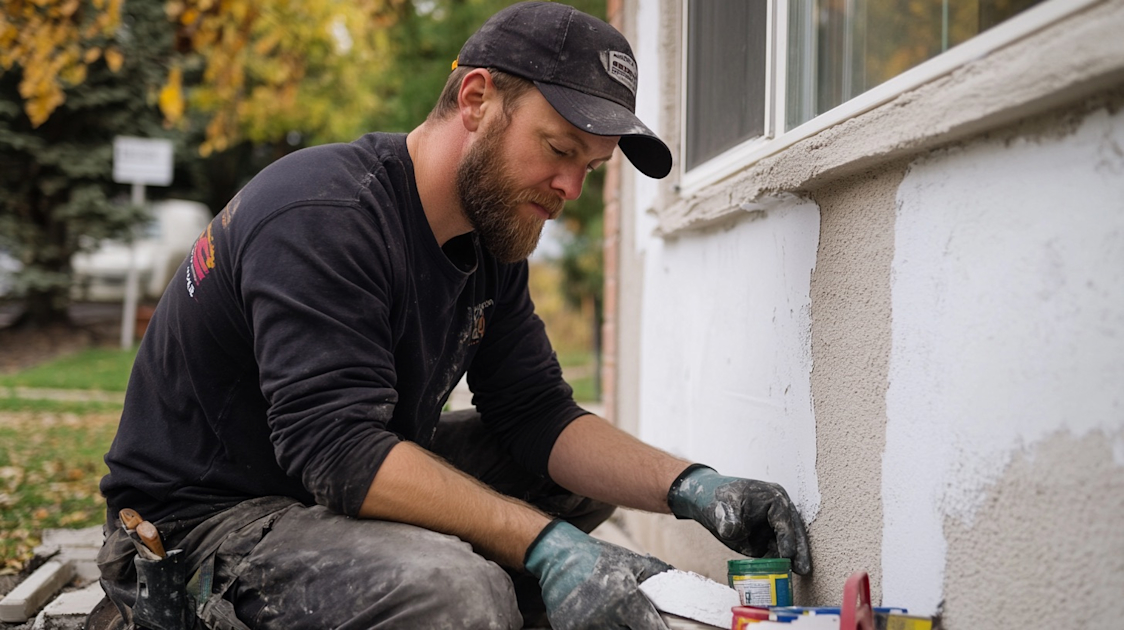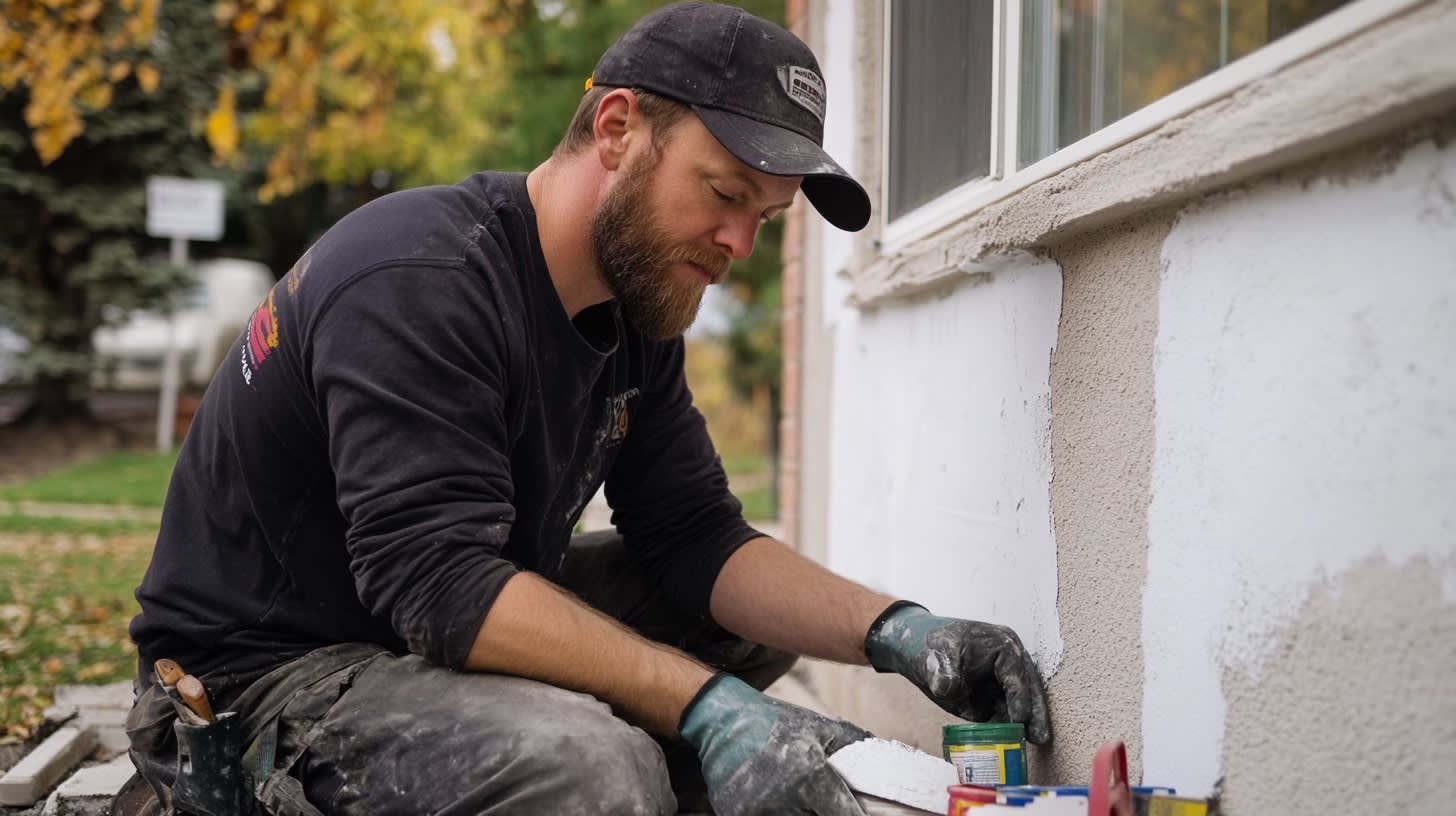Whether you're looking to spruce up your home or fix some damage, one question always comes up when you're dealing with stucco: what materials do I need to repair stucco? The answer isn't always straightforward because it depends on the type and extent of the damage. But don't fret; this comprehensive guide will walk you through all the necessary stucco repair materials, helping you get your home looking its very best.
Understanding Stucco
Before diving into stucco repair materials, it's important to understand what stucco is. Stucco, a traditional exterior finish, has been used for centuries due to its durability and versatility. Made of cement, sand, lime, and water, it's a cost-effective and attractive option for many homeowners.
Essential Stucco Repair Materials
When it comes to repairing stucco, certain materials are essential. They include:
- Acrylic Stucco Patch: Used for small cracks and patchwork.
- Pre-Mixed Stucco Repair Material: Suitable for deeper, larger cracks.
- Stucco Mix: Used for big areas requiring replacement.
- White Cement/Lime: Handy when you need to mix fresh stucco yourself.
- Waterproofing Agent: A must-have for preventing potential water damage.
Stucco Repair Tools
You'll also need some tools to complete your stucco repairs. Here are some of the basics:
- Trowel: A must-have for applying stucco repair materials.
- Scoop: Useful for transferring stucco mix.
- Utility Knife: For cutting away loose or damaged stucco.
- Mason’s Brush: For dusting away loose stucco and preparing surfaces.
- Caulking Gun: Handy for applying acrylic stucco patch.
When to Choose Acrylic Stucco Patch
Acrylic stucco patch is a pre-made, ready-to-use product designed for stucco repair. It's smooth, easy to work with, and ideal for filling in small cracks. It's usually available in a tube, tube with nozzle, or in a tub for trowel application. The product is versatile and it's a good option when you're dealing with minor stucco defects.
When to Use Pre-Mixed Stucco Repair Material
For more serious damage, such as larger cracks or deep holes in your stucco, pre-mixed stucco repair material is a more suitable option. This product comes in a tub and is also ready to use, although it's a bit heavier and coarser than the acrylic stucco patch. It's designed to fill larger gaps and provide a robust repair solution for bigger stucco problems.
The Purpose of Stucco Mix
For more extensive repairs or wholesale replacement of sections of stucco, you'll need a stucco mix. This mix usually comes in a bag and needs to be combined with water before it can be applied. Stucco mix is the heaviest option, providing a lot of depth and durability, but also requires the most work to prepare and apply.
Using White Cement and Lime
Sometimes, you may not want to rely on a pre-made stucco mix. In that case, the option is to mix your own stucco using white cement and lime. This approach allows for more control over the consistency and color of your stucco, but it does require an understanding of the right proportions and mixing techniques.
Waterproofing Agent: The Extra Protection
One of the major reasons stucco requires repairs is water damage. Thus, a key component of most stucco repairs is a good waterproofing agent. After you've repaired your stucco and allowed it to cure, applying a quality water sealant can prevent damage from recurring and extend the life of your stucco significantly.
Frequently Asked Questions about Stucco Repair Materials
How Do I Choose the Right Stucco Repair Material?
Choosing the right stucco repair material depends on the type and extent of the damage to your stucco. For small cracks or holes, a stucco patching compound or caulk could be enough. For larger cracks or patches, you might need a full stucco mix. It's also essential to match the color and texture of your existing stucco for a seamless repair.
Is There a Difference Between Traditional Stucco and Synthetic Stucco Repair Materials?
Yes, traditional stucco is usually a mixture of lime, sand, and cement, while synthetic stucco, also known as Exterior Insulation and Finish System (EIFS), is a multi-layered exterior finish that's more flexible and energy-efficient than the traditional stucco. Each type has its own specific repair materials and processes.
Can I Use General Purpose Patching Material for Stucco Repair?
While general-purpose patching material can be used for smaller stucco repairs, it's generally better to use products specifically designed for stucco. Stucco-specific products are formulated to adhere better and match the texture and color of existing stucco.
Can I Use Concrete Mix for Stucco Repair?
Concrete mix is not typically recommended for stucco repair, as it does not have the same flexibility and texture as stucco. Using concrete mix might cause compatibility issues, like mismatched texture or color, and could even lead to further damage down the line.
Can I Do DIY Stucco Repair or Should I Hire a Professional?
DIY stucco repair is possible with the right stucco repair materials and a bit of elbow grease, especially for smaller repairs. For large areas or significant damage, however, it might be more practical and cost-effective in the long run to hire a professional, as improper stucco repair can lead to further issues.
How Do I Know When to Replace Or Just Repair Stucco?
In general, small cracks or holes can just be repaired. However, if your stucco is suffering from extensive damage, water damage, mold, or other serious issues, you might need to consider replacing the stucco entirely. When in doubt, it's best to consult with a professional.
What Are the Steps to Using Stucco Repair Materials?
Usually, the first step is to clean the area and remove loose stucco with a wire brush or chisel. Then, dampen the area with a hose or water bottle and apply the stucco repair material. You might need to apply multiple layers for larger repairs. After it's dry, you can sand it down to match the surrounding texture and then paint over it to match the color.
Can Paint be Considered a Stucco Repair Material?
While paint does not repair the physical damage to stucco, it's a critical stucco repair material for protecting the repair and blending it in with the rest of the wall. It's essential to make sure your paint is compatible with your stucco material and that it’s specially designed for exterior use. You might also need primer before applying the paint.
Pros of Stucco Repair Materials
Wide Range of Options
Stucco Mixes
There are various stucco repair materials on the market that cater to different needs and preferences. Basic stucco mixes, which are composed of cement, lime, and sand, are readily available at local hardware stores and online distributors. These mixes are designed to be durable, easy to use, and to closely match the texture of existing stucco.
Acrylic Finishes
In addition to traditional mixes, there are also acrylic-based stucco finishes which provide a more flexible and water-resistant coating. This can be a game-changer in humid or rainy climates where water seepage can otherwise cause significant damage.
Durability
Stucco repair materials are known for their hard-wearing characteristics. Once applied, they can last for many years with minimal maintenance required. In addition, they are also resistant to common issues that plague other types of wall surfaces such as fading, peeling, or chipping.
Energy Efficiency
Stucco is an excellent insulator of both heat and cold, which can potentially save homeowners significant amounts of money on their energy bills. This makes stucco repair a cost-effective solution over time.
Aesthetic Versatility
Due to the easily customizable nature of stucco, the range of aesthetic finishes one can achieve with different application techniques is extensive. This grants homeowners the flexibility to match or augment their existing home design effortlessly.
Cons of Stucco Repair Materials
Skill Requirements
Application Process
Applying stucco requires a good understanding of the preparation, mixing, and application process. It’s not as straightforward as other wall finishing methods and can be difficult for novice DIY-ers to master. This can potentially lead to inconsistencies in texture, color mismatches, and poor adhesion if not done correctly.
Maintenance
While stucco is generally low maintenance, any necessary repairs aren't always easy. For instance, color matching can be difficult, which means a small repair might require repainting an entire wall or section of a home to keep things consistent.
Moisture Vulnerability
Despite its durability, stucco is not completely impermeable to water. In areas where torrential rain and high humidity are common, water can seep into cracks, causing harm to both the stucco and the underlying structure.
Cracking Over Time
Stucco is prone to cracking over time as the building or house it is applied to settles and shifts. While minor cracks can typically be repaired with ease, more significant cracks require more in-depth repair work and can be quite costly.
Upfront Cost
While they can save homeowners money in the long run due to their durability and insulative properties, stucco repair materials tend to have a higher up-front cost compared to other wall repair options. This can deter homeowners operating on a tight budget.
Summary
When it comes to the maintenance of your stucco surfaces, having the right stucco repair materials at your disposal is crucial. The quality and durability of these materials can impact the longevity and resilience of your stucco. From simple things like caulk, sealants, and stucco mix, to more specialized items like acrylic finish or colorant, all these materials play a key role in effective stucco repair. Make sure to do some research and get yourself equipped with the best materials that are suited for the problem at hand.
Choosing the correct stucco repair materials can often be a daunting task due to the variety of options available in the market. That's why it's important to understand the different types of stucco and their corresponding repair materials. Each type may require a unique set of materials for proper restoration. For instance, traditional stucco would need a cement-based mixture while synthetic stucco might require an acrylic-based product. Always keep your stucco type in mind when picking your repair materials.
At the end of the day, stucco repair materials are an essential part of home maintenance for those with stucco finishes. To keep your stucco looking good and lasting long, make sure you don't skimp on these materials. Also, don't forget the importance of proper application. Even the best materials won't do much good if not applied properly. With the right materials and techniques, repairing and maintaining your stucco can be a walk in the park.
About Atlas Stucco
Meet Atlas Stucco, your neighborhood exterior stucco household name right here in Sacramento, CA. We love what we do and have been in the game for over three decades, which means we've got the skills, the experience, and the dedication to turn your stucco visions into reality. From residential to commercial projects, big or small, our skilled team ensures precision and quality in every job. We're all about strong foundations, not just in the layers of stucco we apply, but also in the relationships we build with you, our clients. Call Atlas Stucco - experience and professionalism you can trust, the Sacramento way.
Tags: stucco repair, building materials, maintenance,








